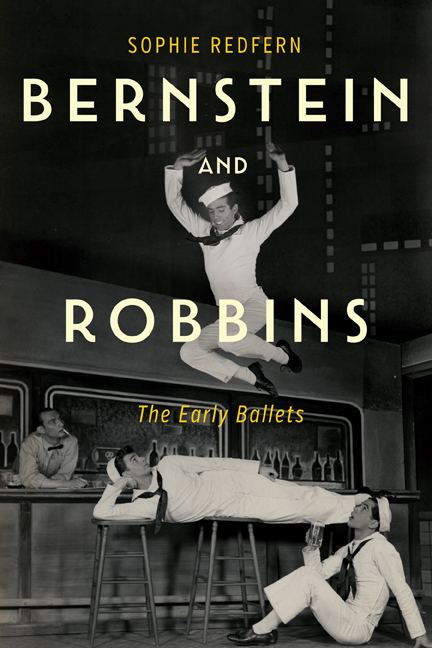Book contents
- Frontmatter
- Dedication
- Contents
- List of Illustrations
- Acknowledgments
- List of Abbreviations
- Editorial Note
- Preface
- 1 Setting the Scene: American Ballet and Jerome Robbins
- 2 Toward a First Ballet: Fancy Free Takes Shape
- 3 Creating Fancy Free: A Long-Distance Collaboration
- 4 The Music of Fancy Free: The Sketches and Score Explored
- 5 The Fancy Free Premiere and a Move to Broadway
- 6 Toward a Second Ballet: Bye Bye Jackie and the Creation of Facsimile
- 7 The Music of Facsimile: The Sketches and Score Explored
- 8 The Facsimile Premiere and Legacy of the Ballets
- Epilogue: Bernstein and Dance
- Bibliography
- Index
8 - The Facsimile Premiere and Legacy of the Ballets
Published online by Cambridge University Press: 23 March 2021
- Frontmatter
- Dedication
- Contents
- List of Illustrations
- Acknowledgments
- List of Abbreviations
- Editorial Note
- Preface
- 1 Setting the Scene: American Ballet and Jerome Robbins
- 2 Toward a First Ballet: Fancy Free Takes Shape
- 3 Creating Fancy Free: A Long-Distance Collaboration
- 4 The Music of Fancy Free: The Sketches and Score Explored
- 5 The Fancy Free Premiere and a Move to Broadway
- 6 Toward a Second Ballet: Bye Bye Jackie and the Creation of Facsimile
- 7 The Music of Facsimile: The Sketches and Score Explored
- 8 The Facsimile Premiere and Legacy of the Ballets
- Epilogue: Bernstein and Dance
- Bibliography
- Index
Summary
Before the Premiere
Expectations for Facsimile were high. Robbins, Bernstein, and Smith as a creative team had thus far always produced a hit and there was the added dimension of a well-reported balletic rivalry in the city. The autumn 1946 season saw Ballet Theatre under Chase and Smith in direct competition with former manager Sol Hurok's new project, the Original Ballet Russe. Hurok had secured the Metropolitan Opera House for his company and so Ballet Theatre changed venue and was to make its debut at the Broadway Theatre. Five new works were premiered by the two companies over the autumn, and on October 13 John Martin surveyed the four he had seen in the New York Times. Unimpressed by the offerings, he optimistically wrote, “Well, we still have … Facsimile to look forward to from Ballet Theatre. The new date is Oct. 24. It better be good!” As the performance neared it was “The big event of the ballet week” in the New York Times, “The week's event” in the New York Herald Tribune, and was highlighted in the Bronx Home News. On October 23, the day before the premiere, an interview printed in PM included Robbins acknowledging how the subject was a long way from the comedies he had previously produced: “I don't want to stick to being the great American ‘yak’ choreographer. I’m trying to rip off the facetiousness that everyone indulges in. I think it packs a dramatic punch and it's a step forward for me whether it comes out successfully or not.” Much of what Robbins said about Facsimile suggests he shared some of Smith's view as to the ultimate value of the new work. There is the sense he foresaw that Facsimile was not going to be a huge triumph and the subject matter meant it was never going to appeal to the public as Fancy Free had. Still, he wanted to attempt a work in a different mold and so for him as an artist it was a valuable project.
- Type
- Chapter
- Information
- Bernstein and RobbinsThe Early Ballets, pp. 236 - 268Publisher: Boydell & BrewerPrint publication year: 2021



